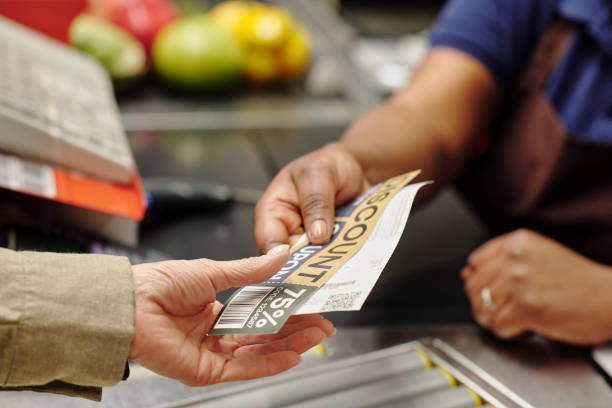
Grocery shopping is one of the most routine expenses for households, but it doesn’t have to strain your budget. With the strategic use of grocery coupons, many shoppers are discovering how to trim their bills without sacrificing quality. Even small savings on everyday items can add up to a meaningful difference over time. Here's how.
The Appeal of Grocery Coupons
Grocery coupons have long been a favorite tool for budget-conscious consumers. Whether clipped from Sunday newspapers, printed from websites, or accessed through apps, these discounts provide instant savings on items that people already plan to buy. The appeal lies in their simplicity — redeeming a coupon is quick and often requires nothing more than a barcode scan or entering a code at checkout.
While individual coupons may only offer modest savings, the cumulative effect can be impressive. Shoppers who make a habit of using them often see noticeable reductions in their grocery bills. This can be especially helpful for families, students, or anyone managing a tight budget. Over time, even small amounts saved on staples like bread, milk, or cereal contribute to long-term financial relief.
Types of Grocery Coupons
There are several types of grocery coupons available, each offering unique advantages. Manufacturer coupons are issued by the companies that produce food and household products. These can often be used at any store that carries the item, offering flexibility and broader access. Store coupons, on the other hand, are offered by specific retailers and are usually only redeemable at their locations. Some stores even allow shoppers to use a manufacturer coupon along with a store coupon on the same item, doubling the savings potential.
Digital coupons are increasingly popular as more stores shift to app-based and online platforms. With a simple tap or click, customers can load coupons directly onto their store loyalty cards or accounts, making the checkout process faster and easier. This paperless option appeals to tech-savvy shoppers and those who prefer to minimize clutter and streamline their shopping experience.
Where to Find Grocery Coupons
The most traditional source of coupons remains newspapers, especially the weekend editions. These inserts often include deals from major food brands and household product companies. However, modern couponing has expanded well beyond printed pages. Websites and apps dedicated to couponing offer searchable databases, printable vouchers, and digital codes for use online or in-store.
Store-specific apps also offer exclusive savings for loyalty members. Signing up for a store’s rewards program often unlocks additional discounts, personalized offers, and even points toward future purchases. Some brands offer coupons directly on their websites or through email newsletters to customers who sign up for updates.
Social media has also become a valuable resource. Brands often share limited-time coupon codes or promotions on their pages, rewarding followers with exclusive deals. Couponing communities online share tips, exchange codes, and alert members to new offers, helping each other save even more.
Smart Couponing Strategies
Effective coupon use is more than just clipping and redeeming. Smart couponers plan ahead, creating shopping lists based on current deals and aligning coupons with store sales to maximize value. Timing purchases around promotions or using coupons on already discounted items can dramatically increase savings. Keeping a small file or digital folder organized by product type can help make the process faster and more efficient.
It’s also important to avoid the temptation to buy something just because there’s a coupon. True savings only occur when coupons are used for items you need or would buy anyway. Stocking up on non-perishables or freezer-friendly items when you have coupons can reduce future trips to the store and help maintain a consistent grocery budget.
Coupons and Budgeting
Incorporating grocery coupons into a broader budgeting strategy can make food spending more predictable and manageable. Setting a weekly or monthly grocery limit and using coupons to stay within that amount builds better financial discipline. It also allows room in the budget for occasional splurges or treats without overspending.
Coupons are also helpful for those looking to donate to food drives or community organizations. Using discounts to purchase additional non-perishable items allows individuals to give more without exceeding their own grocery budgets. This turns simple savings into meaningful contributions.
The Continued Relevance of Coupons
Despite changes in technology and shopping habits, grocery coupons continue to prove their value. They’ve evolved from paper clippings to app-based discounts but remain a go-to strategy for stretching every dollar. Whether you’re a coupon beginner or a seasoned saver, taking the time to find and use these discounts can bring real financial benefits.
As food prices fluctuate, having access to regular savings becomes even more essential. Grocery coupons offer a practical way to navigate economic uncertainty while maintaining a sense of control over your spending. In the end, it’s not just about paying less — it’s about shopping smarter.

